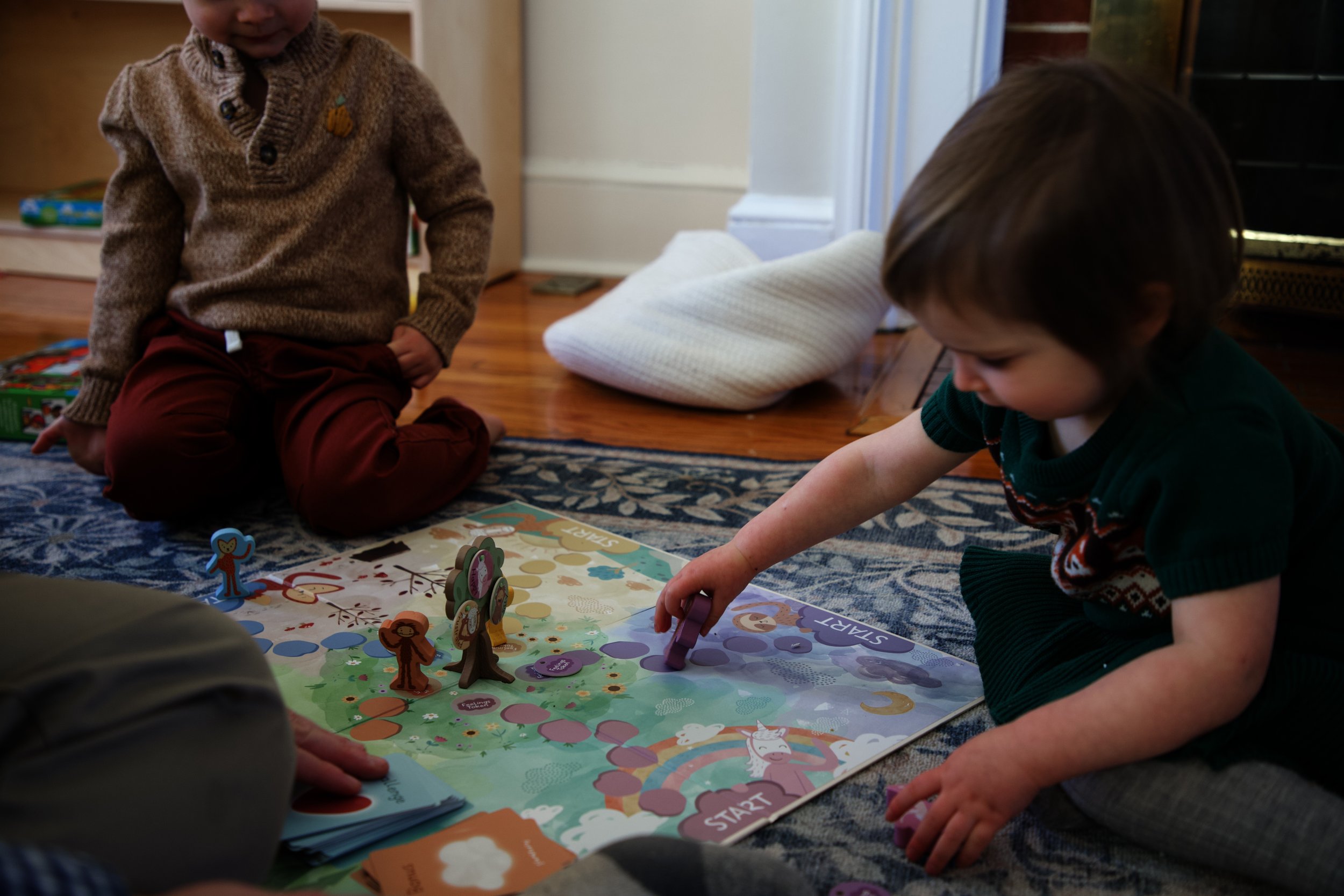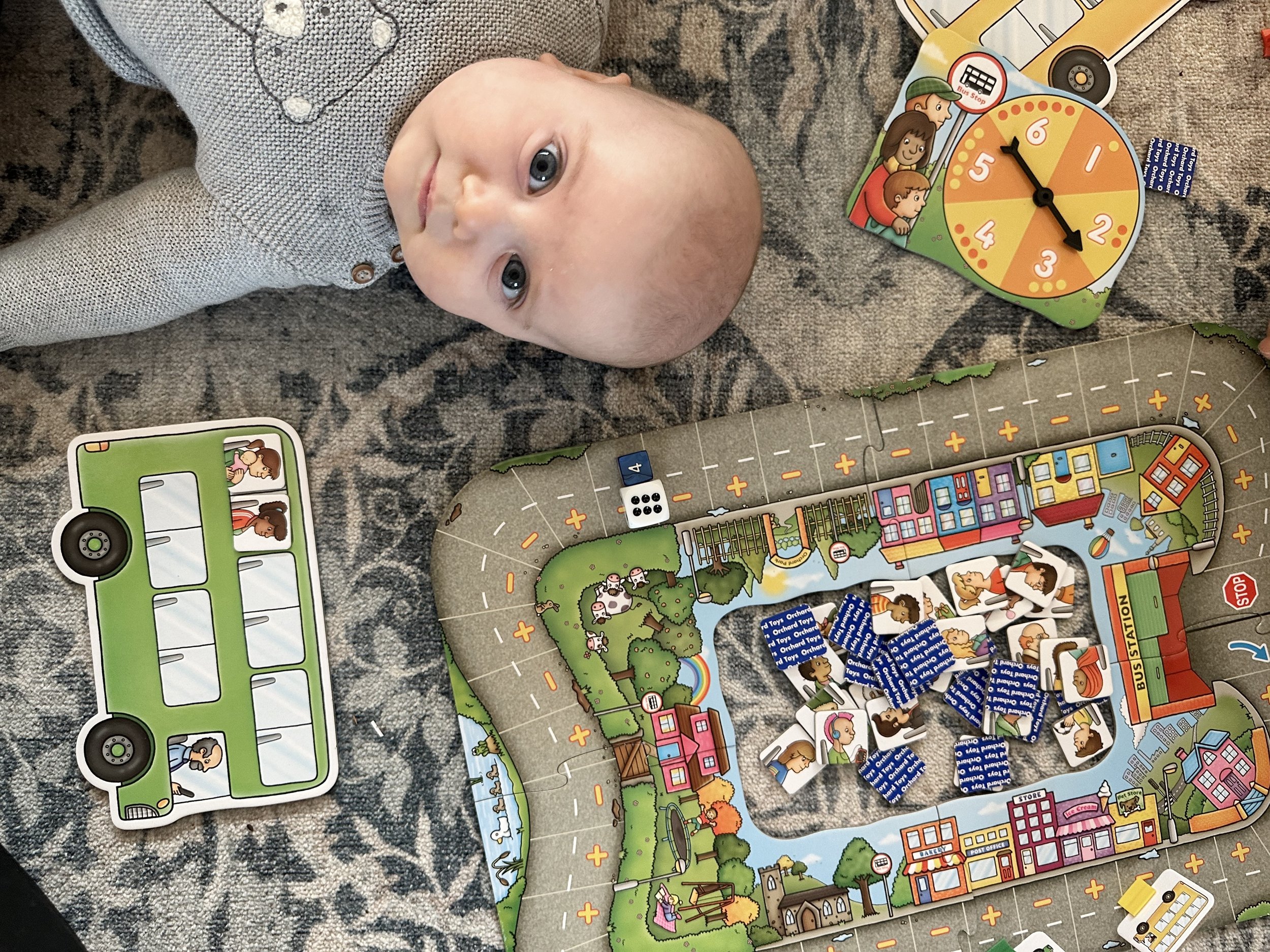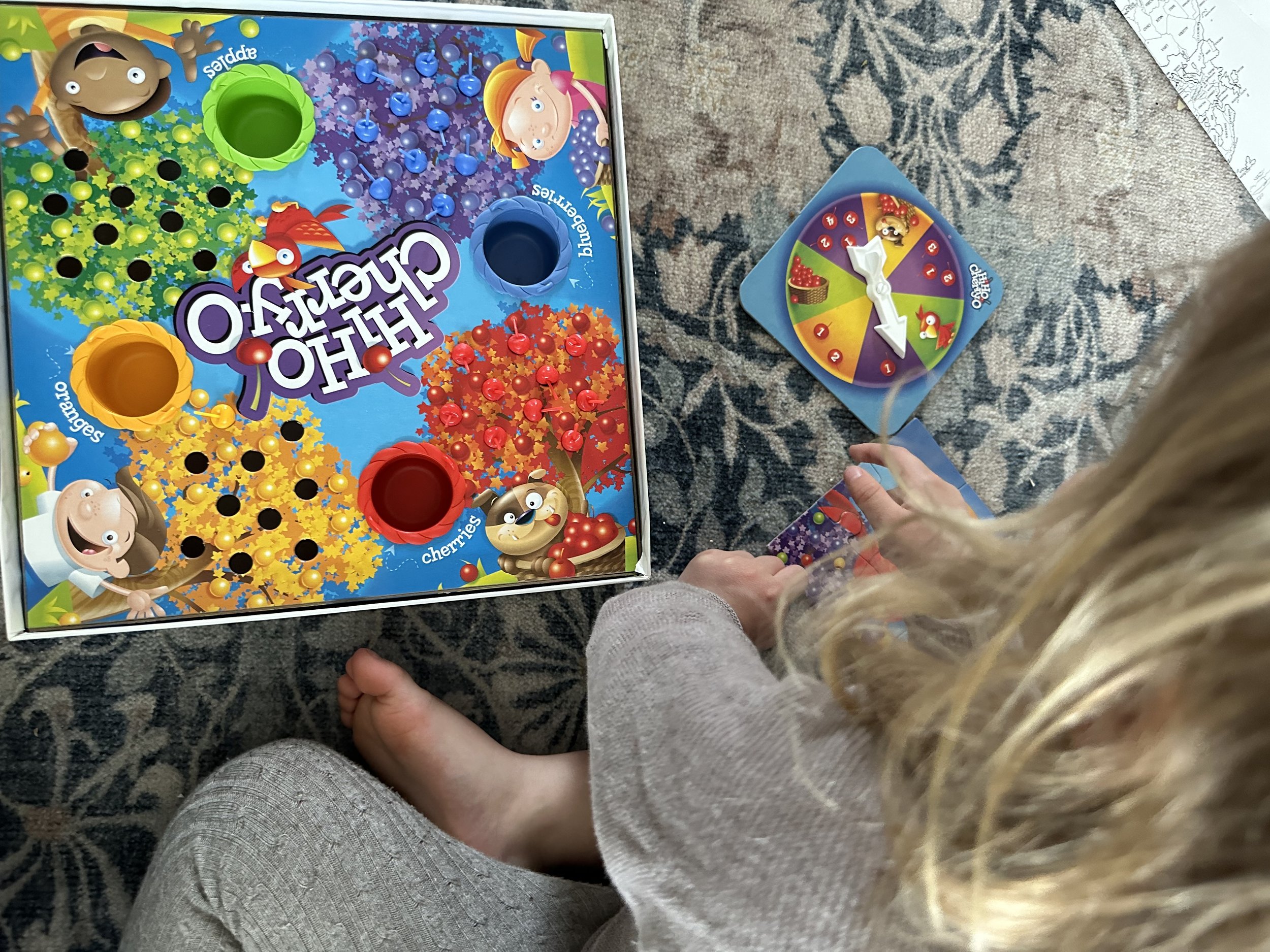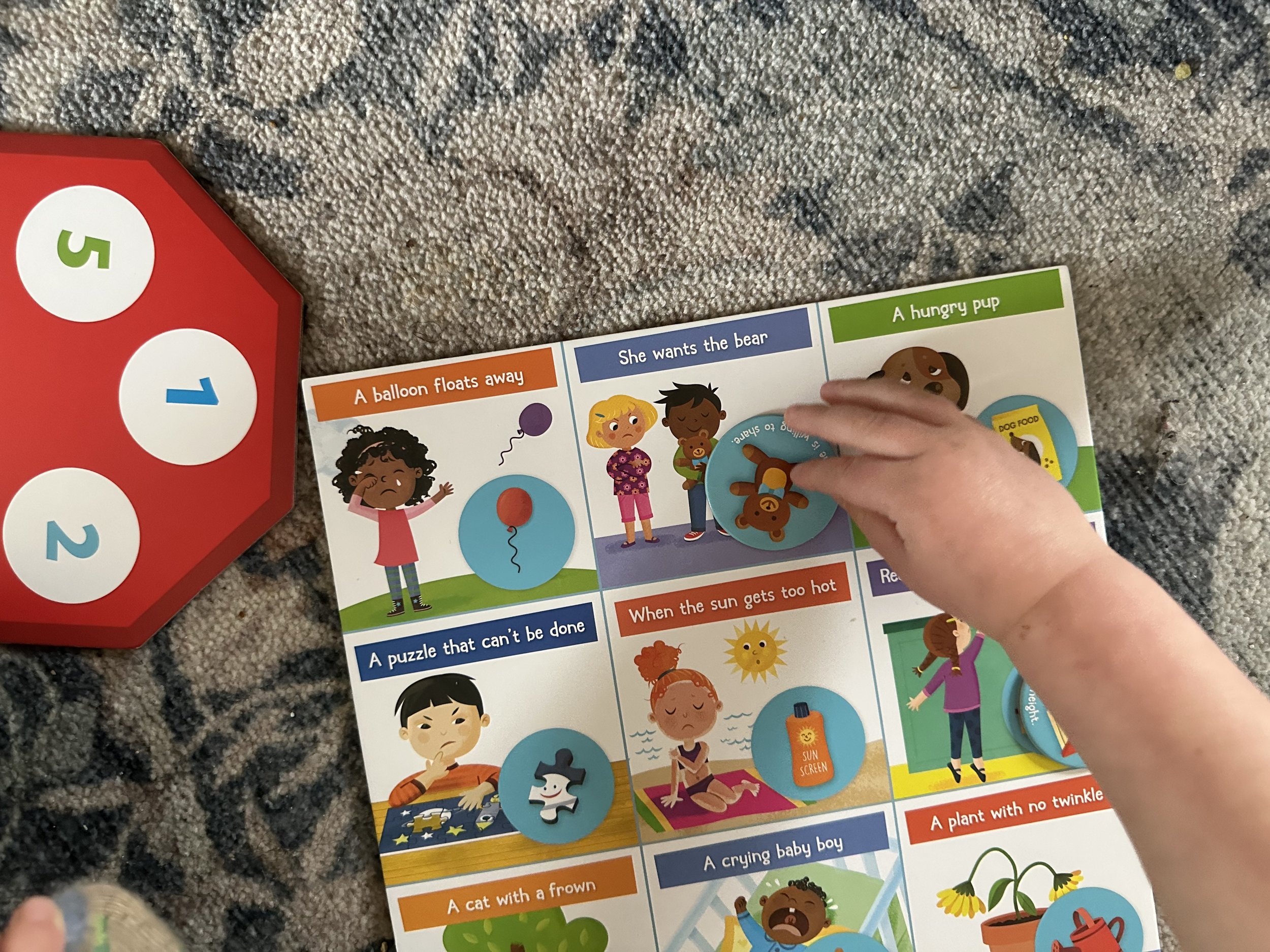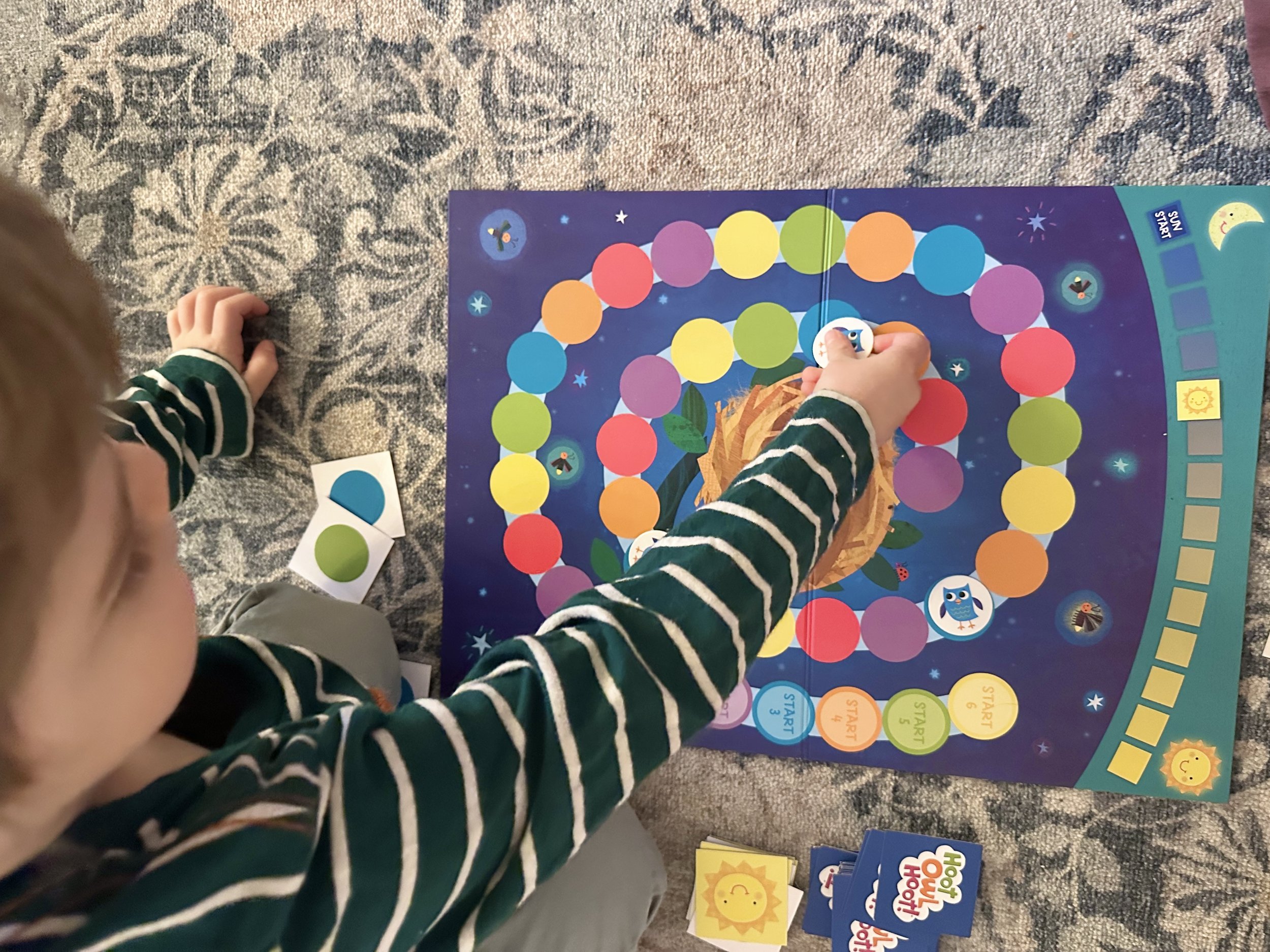The Best Board Games for 3-Year-Olds
This post may contain affiliate links, which means I may earn a small commission if you buy through my link but does not change your price.
If you think board games for 3-year-olds are boring, keep reading this post. You are not stuck just playing Candyland for hours. In recent years a treasure trove of wonderful board games for toddlers and preschoolers has appeared. It has been nearly a year since I wrote a blog post with some of our favorite 3-year-old board games. Since then we have tried so many more. This blog post is going to review every game we have played with my 3-year-old. It includes the best (and reviews of the not-so-great) board games for this age group! I will add to this post as we play more games together.
Board games are an incredible way to bond with your child and work on various skills. They are worth playing for the social skills: waiting turns, losing or winning graciously, and frustration tolerance. They also can be used to work on early-academic skills in a fun way. I try to play at least one board game with my 3-year-old daily and most days I also play a game with both my 3-year-old and brand new 2-year-old.
Now, 3 is a wide age range. It doesn’t get divided up into months like 0 or 1 does but a just-turned 3-year-old and an almost 4-year-old are likely different. Of course individual children vary as well! I did exclude a few games that my son enjoys but I do not think are developmentally appropriate for most 3-year-olds. For example, I left out our favorite phonics and reading games since those will not be appropriate for most children at this age. There are a few others we have played that have much higher target ages so I excluded them as well.
Best Starter Games for Preschoolers
Has your child ever played a board game before? Do they know how to spin a spinner? Roll a die? Move on a board? All of these are skills! This blog post includes a lot of more complex games, but I think it is important to make sure these basic skills are there before introducing those more complex games. I am working on a blog post for true starter games: games that can be played at age 2 as well, but these ones here are all very simple to do with a child who does not have much exposure to games.
First Orchard: This is the first game we played with my son at around 2.5. It is a 2-year-old game but not as simple as some of the other 2-year-old games we play. It is not a game I am enthusiastic to play with my 3-and-a-half-year-old anymore, but it was a great game to get started learning how games work. It is a cooperative game to harvest the fruit before the raven gets to the end of a path. It is incredibly simple with the main skill required being color matching. There is some basic math and strategy to choose to harvest from a color with more fruit if you are given the choice. I added more by putting things in math problems (That tree had 3 apples. You picked one. Now how many are there? 3 minus 1 is 2.) I prefer this to Candyland as a simple color-matching starter game. It has that tiny bit more strategy and math included.
Candyland: Yes, I just said I don’t love this game, but I do think it is still a decent starter game. Learning how to move on a game board is a skill that isn’t necessarily automatic. Just like how we learn to read a book left to right, top to bottom, we need to learn to play a game from the bottom to the top, following the path. Now, I will be honest. I do not play this game anymore with my 3-and-a-half-year-old. He knows this is a game that can be played with my husband in our family’s second language as language targeting.
Sneaky Snacky Squirrel: This is another great game to get started! It is easy enough for a young 3-year-old or even an older 2-year-old to learn. You spin the spinner. If it lands on a color you take that color acorn with the squirrel tongs (cute!). If it lands on the wind you lose them. If you land on the sneaky squirrel you can steal from someone else’s stump. It is similar in style to Hi Ho Cherry Oh but, I think, a bit easier for toddlers and young preschoolers.
Math Games for Preschoolers
Bus Stop: This is my son’s current favorite game. Often we will each choose a game to play and this is almost always what he chooses. It introduces preschoolers to early addition and subtraction as people get on and off the bus. How much they understand of addition and subtraction from this game will likely depend on how much you use the language of addition and talk about the number, but at the very least they get used to the addition and subtraction symbols. My one complaint about this game was always that it can drag. If people get low rolls on the die it can last quite some time. We solved this though by introducing a second die. Now we roll both dice, add the numbers together, and move that many spaces. The benefit too is this adds significant adding practice. We opted for adding a die with number symbols. The included die has pips so this encourages counting off to add rather than just counting the total number of pips. Of course that is a more complex adding skill, so it will depend on your child’s math abilities!
Count Your Chickens: This is a great cooperative game for 3-year-olds. The goal is to get all the little chicks home before you get to the end of the board. You spin the spinner, find where you are to move, and count the spaces you moved. You can then move that many little chicks into the coop. Some of the spaces allow you to take an extra chick home (which means practicing adding 1 to a number). If you get a fox though you lose a chick! My favorite part of this game is it has some counting above 5! I find most games count to 5 at most but this one you can end up counting to at least 15. It also works on the skill of moving on a game board without adding too many other complicated elements. If you want to skip Candyland but practice moving on a game board, this game is it.
Tiny Polka Dot: This is an incredibly versatile math game. It comes with instructions for multiple ways to play at different ages. It is great practice for number recognition, counting, and subitizing. It is a tiny box with lots of uses. Whether you want to play it to sort, memory match, or something else, it’s great. I highly recommend this game!
Hi Ho Cherry O: This is definitely my favorite of the more classic games. It involves a spinner see how much fruit you can pick up or have to put back. Newer versions also have an option to make this a cooperative game which can be nice if you are in a stage where competitive games are not so fun for your family. We play it as a competitive game though and it is straightforward. It has a counting element with one-to-one correspondence moving the fruits. The counting is only to 4 but one-to-one correspondence when counting is such an important early math skill so it is great to work on here if your child struggles with it!
Chutes and Ladders: This is another simple and classic game for moving on a game board. I will say it is not one we reach for much at home, though my son loves playing it at a restaurant we go sometimes that has board games. It is a good introduction to moving a certain number of spaces on a game board. Since you are moving a set number of spaces it is a bit more challenging than Candyland. Children have to count out as they move with one-to-one correspondence, which is more challenging than either just counting or counting a number of objects.
Social-Emotional Games for Preschoolers
I absolutely believe every board game is teaching some social-emotional skills to preschoolers, but these games are particularly targeted for that.
Friends and Neighbors game (featuring my nearly 2-year-old’s hand)
Feelings Adventure: For a bit this was probably my son’s second favorite game after Bus Stop. I am not entirely sure why but it is a cute game. It is cooperative and focuses on social-emotional skills. It includes affirmations, movement, and acting out emotions. It’s an easy one for us to do with a younger sibling around who wants to also spin the spinner and do some of the movements.
Friends and Neighbors The Helping Game: We got this one from our local borrowing library and I was very glad we tried from there rather than buying. Despite being ages 3+, it was much too easy for my 3-year-old and more appropriate for my not-yet-2-year-old. It did allow for some conversations about emotions though which is always great. This isn’t one I would buy but I enjoyed having it for a couple weeks!
More 3-Year-Old Games
Hoot Owl Hoot: This is technically a 4+ game but we have been playing it since my son turned 3 and love it (I have found some of the Peacable Kindgdom games really more appopriate in our house when my children are slightly younger than the recommended age). The goal is to get all the owls home before the sun rises. You flip over cards to move the owls around the board, strategizing how to get the owls to move as far as possible. This is one game I remember playing and loving with children I babysat as well!
Memory Match: This can be done with pretty much any cards. The first time we played it we played with a Go Fish! deck. I then got my son a set of the Hebrew alphabet since we are working on that. Whatever your child likes though is probably available in memory match! It is fun and works on memory skills.
Guess in 10 Jr.: This is a great guessing game. It is similar to 20 questions but 10 questions. The junior version has guided questions (no reading required, you look at the picture for the question). Someone chooses an animal and everyone else draws cards to ask the questions.
Outfoxed: This game is listed as 5+ but is my absolute favorite game with my 3-and-a-half-year-old. He totally gets it and though he might not use all the same strategies we use, he easily uses the clues to determine who the thief is. It might not be age-appropriate for every 3-year-old or may become more doable later into 3 but I could not leave it off the list. This is the first game my husband and I said “Wow, I could imagine playing it without kids.” He called it “Clue but better.” It is such a great game of finding clues to figure out which of the foxes stole the pie. This is truly such a fun game!
Don’t Break the Ice: My favorite thing about this game is that my two kids were able to have a great time playing together! It isn’t one I am willing to play too many rounds of though. It takes more effort to set up than actual game play and it isn’t so educational. Of course, the social side of game play is still there and that is absolutely valuable! We enjoy this but for us it has been a perfect game to play at grandparent’s house rather than at home.

